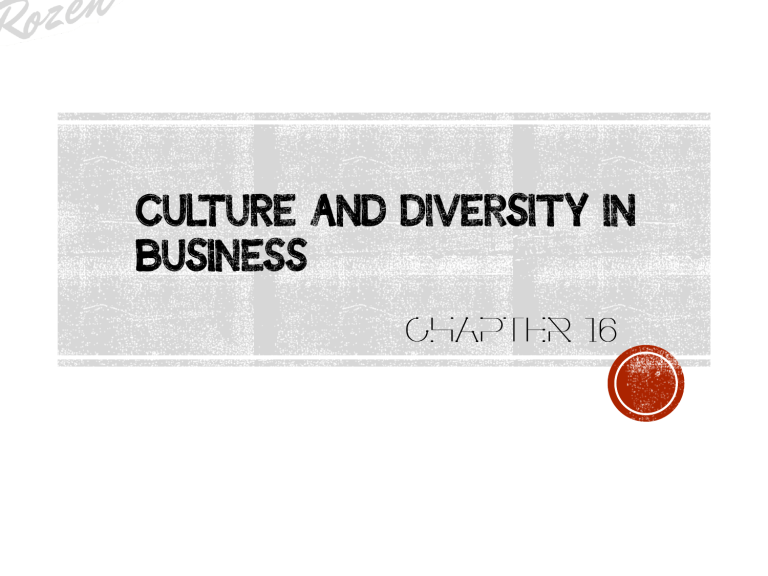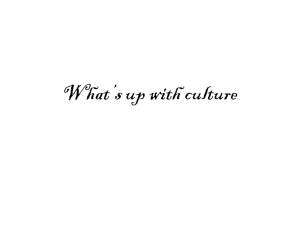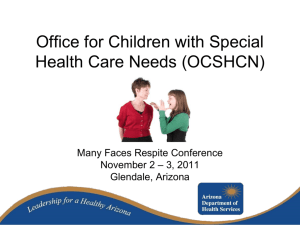
▪ Culture – the beliefs, customs, and attitudes of a distinct group of people ▪ Often defined by dress, food, language, art ▪ Can also be defined by history, geography, religion ▪ Can refer to a group, an entire city, or a country ▪ Companies MUST know the cultural differences as they trade globally ▪ Must know etiquette, business customs, and proper personal interaction ▪ Will lose business ▪ Will be seen as less smart Culture has TWO distinct meanings ▪ Culture of other countries you do business with ▪ Culture of your own business/company ▪ Must be aware of differences in language (especially slang), currencies, laws, and measurement, customs ▪ Eating habits ▪ Touching ▪ Making eye contact ▪ Life in Japan ▪ Might have to change your product to suit the new market ▪ Chevy Nova ▪ Coca-Cola changing formula ▪ Budweiser changing alcohol content ▪ Must be aware of language issues ▪ Jolly Green Giant ▪ Must adapt to culture of country living in ▪ Mexico has siesta in the afternoon ▪ Holidays are different in other countries ▪ Religious beliefs (days of operation) ▪ Interaction with employees ▪ Business Etiquette – what is considered acceptable social behavior and manners in business. ▪ Different in different parts of the world ▪ Gifts from clients in Japan ▪ Having a meal before getting started ▪ Must respect the customs of those countries ▪ Corporate Culture – a company’s shared values, beliefs and goals. ▪ Can be formal or informal ▪ Owner or boss can dictate formality of culture ▪ Level of formality sets rules for business ▪ Strict Hierarchy – everyone has a specific rule or chain of command. ▪ Dress codes strictly enforced ▪ Written manual of expectations and job duties ▪ Job titles a sign of power and status ▪ Very attention to detail oriented ▪ Not as strict – employees have more freedom. ▪ Casual dress code ▪ Promote social activities ▪ Flexible work hours ▪ Creativity and teamwork over job titles and status ▪ Managers on first name basis with employees ▪ No two people or groups are alike ▪ Your success in the workplace depends on how well you get along with others ▪ Different skills ▪ Different work habits ▪ Different approaches to tasks ▪ Diversity is not the same as culture ▪ People diverse based on: •Age •Education •Gender •Marital/Parental status •Ethnicity •Income •Individual Needs (handicapped) •Religious beliefs ▪ Stereotyping is bad ▪ People have individual skills ▪ Dealing with diversity means understanding and using the differences of people ▪ Hispanics and Asians are fastest growing groups in US ▪ Hispanic population grew almost 60% b/t 1990-2000 ▪ Hispanics no longer minorities in CA and TX ▪ Population getting older ▪ 1946-1964 babies are called baby boomers (due to WW II) ▪ Have 51% of all wealth in country ▪ About 85% of people entering workforce are women and minorities ▪ More women, Asians, Hispanics, African-Americans in management ▪ Younger workers becoming more important ▪ Minorities and women now working ▪ Now have purchasing power ▪ Company reaction ▪ Used to only target white males ▪ Now target all areas of market ▪ Must appeal to all different groups ▪ More pharmaceutical ads than ever before, why? ▪ Baby boomers are now 50-60 years old ▪ Human Resources responsible for managing – tries to make company inclusive organization ▪ Increases productivity ▪ People want to work for company ▪ Goal is to create inclusive, respectful work environment ▪ Until 1970’s workforce was white males ▪ People tend to hire people like themselves ▪ Had no laws to protect anyone ▪ Discrimination – excluding someone on the basis of age, gender, ethnicity, or physical handicaps ▪ Illegal in workforce now due to Anti-Discrimination Laws ▪ Some companies did policies before laws ▪ Age Discrimination Act ▪ Protects workers over 40 (ageism) ▪ Equal Employment Opportunity Act ▪ Regulated by EEOC ▪ Protects based on gender, ethnicity, religion, etc. ▪ Americans with Disabilities Act (ADA) ▪ Protects handicapped workers ▪ Requires handicapped accessibility for all buildings ▪ Many companies have diversity programs to help employees work together ▪ Promote trust and cooperation b/t employees ▪ Break down stereotypes ▪ Managers must work to promote equality and break stereotypes and discrimination ▪ Promote this through corporate culture ▪ Companies purposefully hire diverse people ▪ Allows to work with more diverse customer base ▪ Have increased productivity and efficiency ▪ Fewer legal costs from being sued ▪ A diverse workforce offers a broader range of ideas and ways of looking at things. ▪ Greater diversity in the workplace helps a company better understand and serve the needs of a more diverse marketplace. ▪ It creates a greater sense of morale among employees and commitment to company goals.





